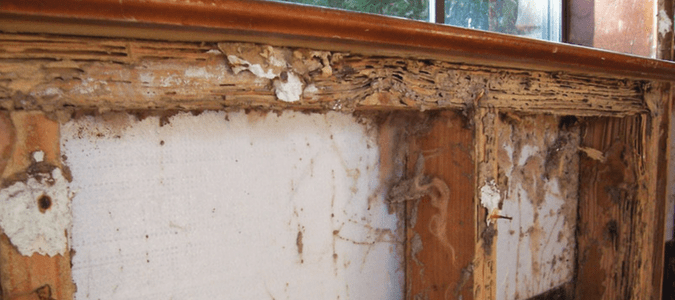
Subterranean termites are a homeowner’s worst nightmare. The hordes of tiny, wriggling insects can effortlessly gobble up your home and your savings account. As horrifying as they seem, they’re just doing what nature designed them to do. In the forest, termites remove debris from the earth’s surface and help return nutrients to the soil. Unfortunately, when they’re on your property, they can’t tell the difference between a dead stump and an antique piano. The ecosystem’s little janitors know that they’ve found a yummy cellulose material to devour, and they have voracious appetites. You may be worried about your foundation because you’ve heard that termites can even eat their way through concrete.
You may have heard of subterranean termites, or even the invasive Formosan variety, but is there such a thing as concrete termite? Let’s answer that question and more so that you can protect your home from the pest that is blamed for over one billion (yes, you read that right) of damage to U.S. homes annually.
Is Concrete On The Menu?
Can termites eat concrete? When it comes to termites and the risk they pose to your homes, there is one piece of good news: these dangerous pests don’t eat concrete. This material offers the insects no nutritional value—it’s just in their way. Termites hold the same regard for concrete as humans hold for metal bottle caps. A bottle cap stands between you and your refreshing beverage. You can’t eat it because it’s too hard, and you have no need for it anyway. While many forms of concrete are too hard for termites’ jaws to cut, they can sometimes partially excavate weak or damaged concrete to help them gain access to food sources like your wood flooring. Some types of concrete, such as lime mortar and aerated materials, are softer or more easily manipulated. In some cases, a termite can do damage by simply pulling out individual bits of loose sand.
The Secret Passage To Termite Heaven
The urban myth of termites eating concrete is not totally inaccurate, when you look a bit deeper (pun intended). Getting through hard, stable concrete isn’t always a big challenge. Concrete is extremely strong, but it’s not flexible. This is why you may notice cracks when you look closely. Sometimes these imperfections can develop while newly poured concrete is drying. Other cracks can form when soil settles under a slab.
Termites can get through a crack as narrow as the width of a business card. When they discover these tiny invitations, they squeeze right in. Expansion joints and untreated hollow spaces between bricks are also perfect entry points for termites. While they aren’t really interested in munching on your foundation, termites will definitely take advantage of its vulnerabilities. The real prize is the cellulose in your wood, so these pests will take advantage of any voids to create mud tunnels to locate and start feeding on this material, so pay attention to the state of your concrete structures.
Concrete Eating Bugs
Now that you know that termites don’t actually eat concrete, you may wonder what else could have damaged your concrete. While you may notice some beetles and other bugs in these areas when you are going through a home inspection checklist, you won’t have to worry about these insects. You may notice small gray bugs on your concrete, such as pillbugs and sowbugs, but these little guys will do no harm. The only other animal that could pose a threat to any weakened concrete around your home is a rodent.
The way that rat muscles have evolved over time has made these critters specialists at both chewing and gnawing through a broad range of materials. These rodents have been known to chomp down on plaster, paneling, aluminum siding, concrete and other seemingly-impenetrable objects. Why do rodents chew on our home and damage our property? One thing that distinguishes these animals is that their incisors lack roots. This means their teeth never stop growing, so rats and mice are constantly self-sharpening their teeth to keep them sharp and short.
Termites Are No Match For ABC
At ABC Home & Commercial Services, we protect homes from termite damage with a comprehensive, ongoing program. Our strategy begins with a thorough inspection to detect evidence of termite presence and structural damage. We’ll treat termite feeding zones to eliminate live insects, and we’ll return to identify any further termite activity. After your termite problem is gone, we’ll make sure your property is protected you from new invasions. Contact us to schedule service for the peace of mind that comes with reliable, year-round pest control.
